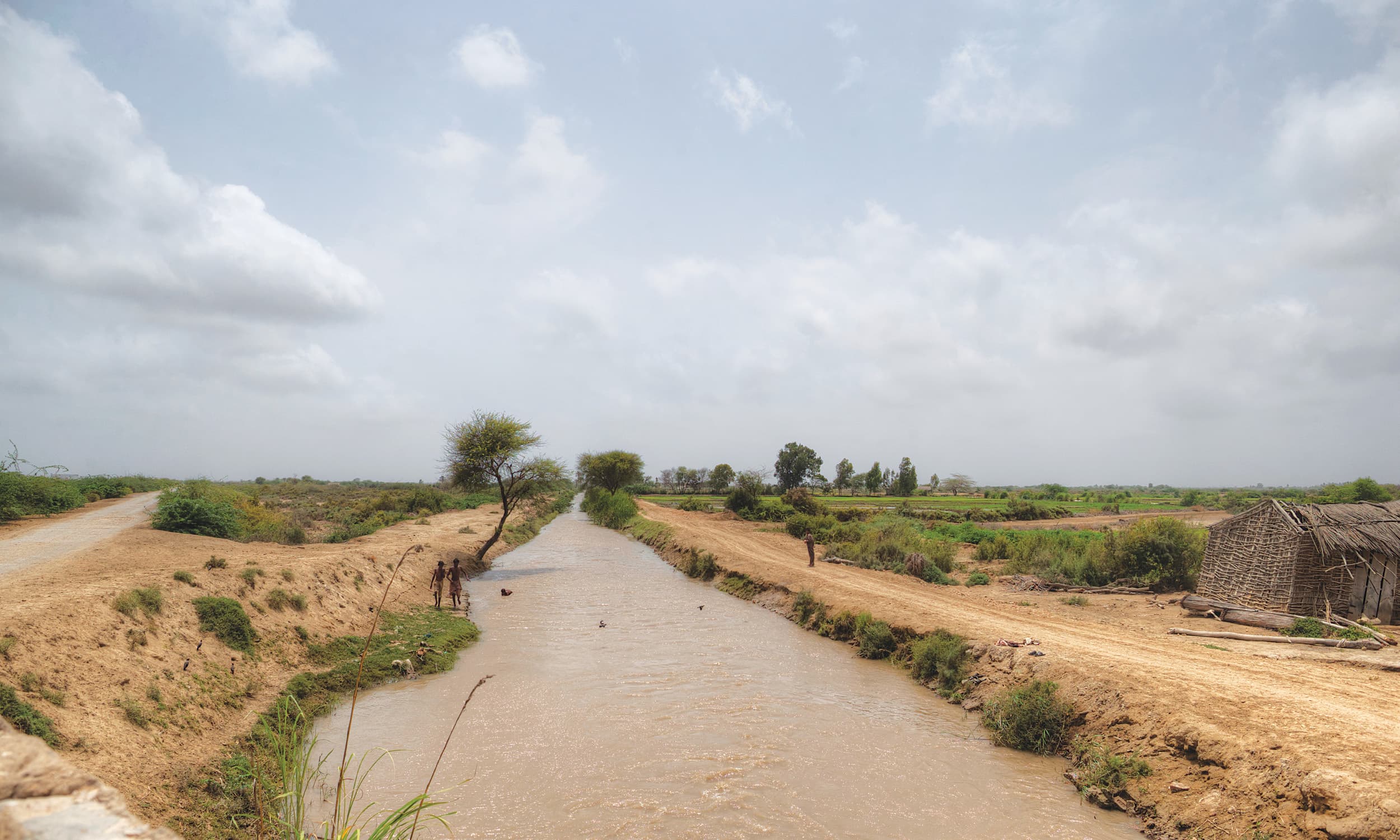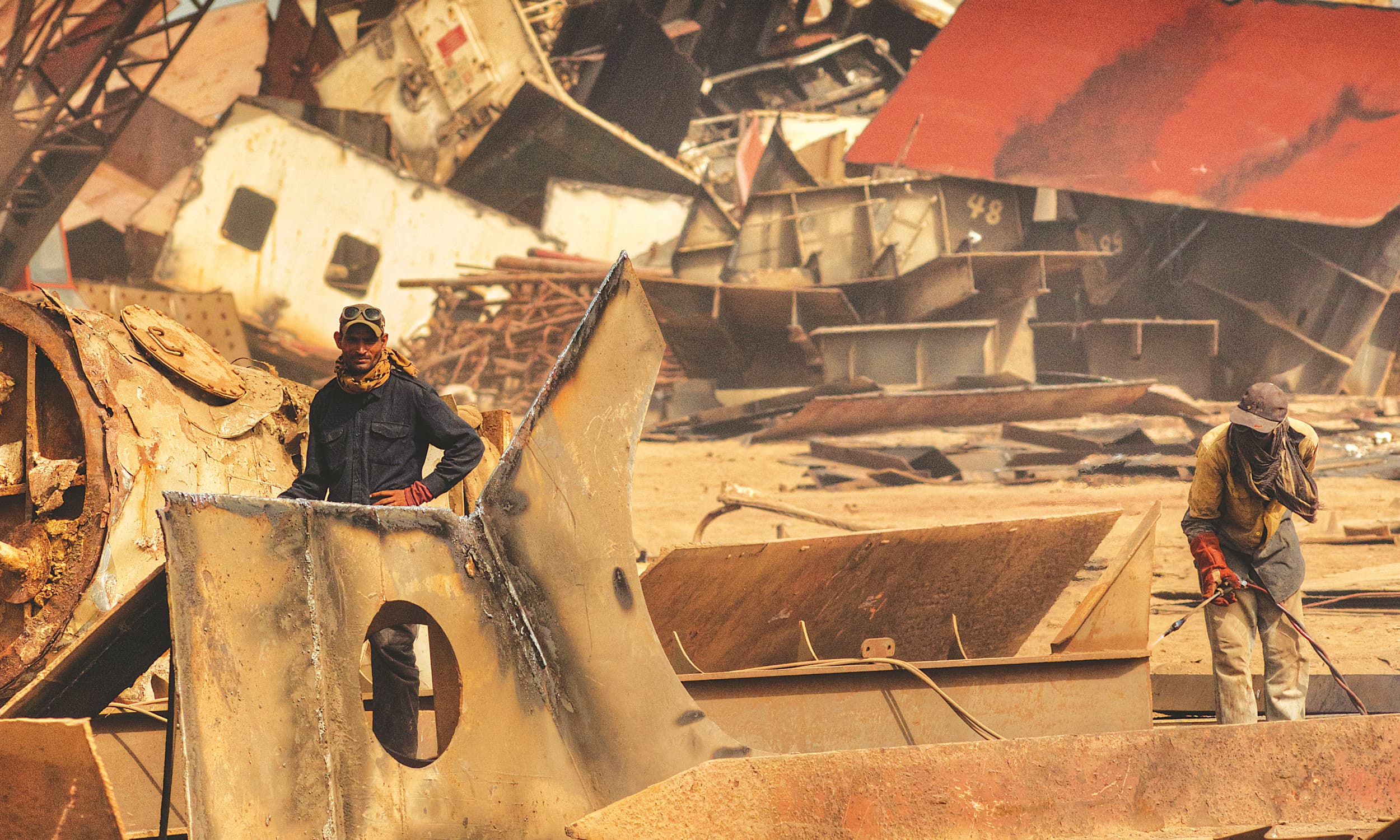
Very few of us have explored the country we live in; our knowledge of the world outside our hometowns is usually limited to places where the top 10 hotels are situated. What lies out there beyond the reach of modern amenities is largely unexplored. Ensconced within the confines of our homes, we also tend to see almost everything outside as being hostile.
My travel to Gharo, to the east of Karachi on the Arabian Sea coast, in the middle of June 2016 was instructive on both counts.
The road to Gharo was anything but smooth. By the time I reached there, I felt like I had been rolled down Mount Everest in a barrel. The wind was so intense on the way that at times it felt like there was someone about to flip over my car. If I could put a sail on the car, I could have flown across the coast. That would have been a far better option than have my innards all shaken by the uneven road.

You know you are moving towards the coast when the residential buildings start changing from concrete blocks to adobe straw huts. The landscape changed along with it – from lush green to bone dry – till it got drowned into the sea.
The day ended abruptly in Gharo; there was no evening, no sunset. It was day one moment and then in the next it was night, probably because the sky was overcast. Yet it was not all dark. Everything – people, objects and places – had a soft glow around it.
Also read: The coast is clear- The vanishing mangrove forest of Karachi
And the local residents were friendly and courteous, not hostile.
It was almost the middle of the fasting month of Ramzan but many people in and around Gharo did not seem to be fasting. The eateries were open and it was business as usual for food vendors. Most people I met offered me tea and asked me to partake in their meals, mostly made with the catch of the day. Some asked me if I wanted to travel out to the sea with them.

There was a sense of openness, of freedom — something the cities laden with concrete and asphalt don’t seem to have. How long will this last? Dirt roads are being paved slowly and someone will soon realise how close the area is to Karachi, making it lucrative real estate to be sold for extending the cities laden with concrete and asphalt to these rather unspoiled natural environs.
The second day was darker. It looked like the clouds could crack any minute and send down a heavy downpour. And while I was thinking of rain, it seemed as if someone flipped a switch and suddenly the sun was out with all its blazing glory.

In Makli, the city of ancient tombs just outside Karachi, there seemed to be a macabre fascination with enshrining and exalting those who had passed away long ago. People here go to ask the dead for favours most likely because the living have let them down repeatedly.
Back to the trek. The other major pit stops to the east of Karachi are Sujawal, a densely populated, overcrowded town, and Chuhar Jamali, a big trade town, with a lot of vans transporting passengers and/or goods.

It was exciting to arrive at the Keti Bandar wildlife sanctuary after having visited ill-planned and ill-kempt old and new human settlements along the coast, but the reserve turned out to be too vast to cover in half a day. It was also jealously guarded by the protectors of our naval borders.
Don’t you wish you could just keep travelling forever, not knowing what tomorrow will bring, not bothering about security, not worrying about comfort zones — just living and experiencing the world? No borders, no boundaries. Where you come from and who you are stop mattering and the only thing to think about is where you are going next.
Also read: Train to Balochistan-Following the railway tracks in Southern Pakistan
I knew where I was headed next. Having driven along the coastal areas east of Karachi, I was going to take a long drive along the ones lying west of the metropolis.

At the beginning of the third day of my exploration, I saw a crow pick at the remains of a cat’s carcass on the side of a road leading out of Karachi. A few feet away, traffic police had rounded up several bikers and there was an argument going on between the two sides. Smoke rose from a pile of garbage a little further ahead. This was Rais Goth, a semi-urban locality situated on the road that links Karachi with Balochistan’s industrial town of Hub with Gadani, a village that houses ship-breaking yards.
Gwadar has expanded a lot in recent times. Yet, fortunately, so far it is nothing like the knock-off version of Dubai that it is projected to become in the near future
In Gadani, too, a woeful lack of civic amenities was creating huge public resentment. Local residents were on the streets, protesting against the absence of electricity. Half of the town, where workers from the shipyards live, had been without electricity since the beginning of Ramzan. There, however, were other signs of progress. A huge construction site could be seen along the highway as I left Gadani for the coastal towns further west. The signboard said a cement factory was being built there. Industry seems to be spreading along Balochistan’s coast. There are more walled compounds with barbed wire fences and guard posts here than there are on the eastern part of the coast.
Those driving on the coastal highway encounter a dust storm around noon almost every day of the summer. On that particular June day, I could barely see more than five feet ahead of me while driving through the storm. Only a sliver of the road appeared out of a greyish beige world around me. Driving into the unknown for four hours, I found no working fuel stations along the way to refuel the vehicle and hide myself from the storm. By the time I found one outside Pasni, the fuel tank was almost empty.

Getting into Gwadar, one could see a skeleton of the megacity that this port town is supposed to become. Dusty roads and low stone walls marked the various residential and commercial projects being planned here. Elsewhere, a few grand entrances to proposed new neighbourhoods led to nothing behind them.
Also read: Risky environs- Here's why we should care about climate change
The heart of Gwadar is contained within a labyrinth of criss-crossing roads which keep getting narrower the further you travel down them. When I last visited the town in 2013, the coast was still visible from far away but this is no longer the case as Gwadar has expanded a lot in recent times. Yet, fortunately, so far it is nothing like the knock-off version of Dubai that it is projected to become in the near future.

Upon the hill overlooking the town sits a five-star hotel opened years ago to cater to the swarm of bureaucrats and investors that the construction of the deep-sea port was expected to bring in its wake. The expectations of that boom vaporised as fast as Pervez Musharraf’s political career dissolved into multiple controversies. As the Chinese are now set to take over Gwadar, it comes as no surprise that the first few channels on the hotel television cable are in Chinese language.
Gwadar is a town with a wonderful sense of ease and self-confidence about it. A walk with a camera through the streets or a stroll across its impressive beaches does not arouse any unwarranted curiosity. Nothing here makes you feel that you are unwelcome. My fear is that this may change as more development projects and, along with them, more outsiders show up in the town which is already reeling under a number of civic problems. Electricity supply is erratic, water shortages are chronic and roads are in various stages of disrepair. To a certain extent, this combination of influx of people and dearth of amenities is exactly what lies at the bottom of the ethnic, political and law and order problems in Karachi.

One thing that seems to have improved in Gwadar and its nearby areas recently is security. Protected by various departments of the armed forces, the region is heavily fortified and appears well guarded.
The last place I visited was Jiwani, the farthest western town on Pakistan’s coast, right next to the Iranian border. Local residents told me it took only 20 minutes by boat to go to Iran and on a clear day one could see Iranian settlements across the mountains lining the sea. Jiwani is a little town with a lot of ugly architecture nestled in beautiful natural surroundings. Its land is being rapidly eroded by the sea. The Balochistan irrigation department has recently built a protection wall for houses located next to the sea.

On the way back to Karachi from Jiwani, I got caught in an accident caused by sandstorms between Pasni and Ormara. I got hurt when my car collided with a bus coming from Karachi. In three other similar accidents the same day and in the same area, two people lost their lives and many others were injured.
As I was recovering from my injuries in a foreign land, my grief over these accidents was overshadowed by something much bigger — all the loss of life in recent weeks in places such as France, the United States, Turkey, Kashmir and Pakistan. Inflicted upon us under the various flimsy excuses of religion, liberation and (both personal and national) honour, death certainly has become the biggest equaliser.
This was originally published in the Herald's August 2016 issue. To read more subscribe to the Herald in print.
Kohi Marri is a graduate of Oxford school of architecture, Oxford Brookes University. He works as a freelance photographer doing commercial, editorial and personal projects.







